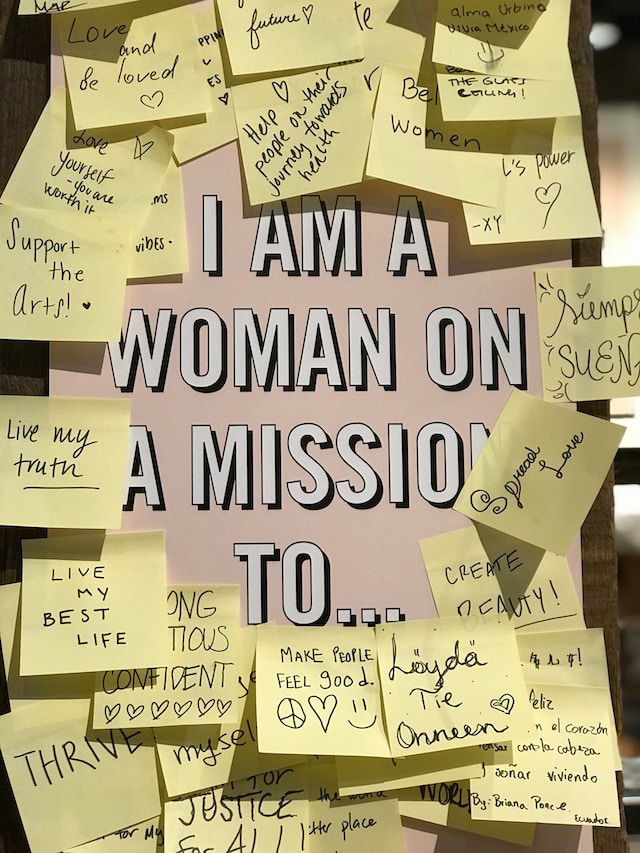Introduction: What is Female Voice in American Literature?
The female voice in American literature has undergone a remarkable transformation over the centuries, reflecting the struggles and triumphs of women throughout history. From a time when women were silenced to an era when their voices demanded attention, this journey is one that deserves recognition. This blog post takes you on a journey through time, exploring how the evolution of female voices in American literature reflects the changing roles and aspirations of women. So, buckle up and get ready to take a trip down memory lane!
The Pre-Industrial Revolution: A time of silence for women
The Pre-Industrial Revolution was a time when women’s voices were stifled in American Literature. In fact, female writers were few and far between during this era as the patriarchal society repressed their creativity.
Women did not have access to education, publishing or writing opportunities which severely limited their ability to express themselves. Society saw them as inferior beings who could not be trusted with knowledge or authority.
Moreover, the prevalent belief was that women should only concern themselves with domestic duties such as cooking, cleaning and taking care of children. These roles became synonymous with femininity while intellectual pursuits like reading and writing were reserved for men.
Consequently, many female authors wrote under male pseudonyms so they could share their stories without facing ridicule or dismissal from readership dominated by males. The lack of representation of female voices in literature mirrored the social norms that suppressed them.
Despite these challenges faced by women writers during pre-industrial America, some managed to break through the glass ceiling and make significant contributions to literary works even if it meant doing so anonymously.
The Gilded Age and the Progressive Era: A time of change for women
The Gilded Age and the Progressive Era marked a time of change for women in American literature. Women writers began to express their opinions on political, social, and economic issues that were previously considered taboo.
During this time, female authors such as Kate Chopin and Edith Wharton focused on themes of gender inequality, marital dissatisfaction, and sexual freedom. Their works challenged traditional gender roles by portraying strong-willed female characters who refused to conform to societal norms.
One such example is Chopin’s novel “The Awakening,” which tells the story of a woman who rebels against her husband’s expectations and discovers her own desires. The book was initially met with harsh criticism but later gained recognition for its feminist message.
Similarly, Wharton’s “The House of Mirth” explores the constraints placed upon women in high society during this era. The protagonist Lily Bart struggles to navigate through a world where marriage is seen as the only means of financial security for women.
The Gilded Age and Progressive Era provided an opportunity for female authors to bring attention to important issues affecting women at that time. Their works served as a catalyst for future generations of writers who continued to push boundaries in American literature.
The Roaring Twenties and the Great Depression: A time of upheaval for women
The Roaring Twenties and the Great Depression marked a time of great change for women in American literature. The flapper movement emerged, challenging traditional gender roles and promoting female independence. Female writers began to explore new themes such as sexuality, identity, and individualism.
One of the most prominent voices of this era was Zelda Fitzgerald, wife of F. Scott Fitzgerald. Her writing shed light on the struggles faced by women during this time period, including mental illness and societal expectations.
However, with the onset of the Great Depression came a return to more conservative values. Many female writers were forced to put their careers on hold or abandon them altogether due to financial hardships.
Despite these challenges, some notable works emerged from female authors during this tumultuous time period. Nella Larsen’s “Passing” explored issues related to race and class among black women in New York City society while Lillian Hellman’s plays tackled political issues such as fascism and McCarthyism.
The Roaring Twenties and Great Depression marked a significant shift in American literature towards more diverse perspectives on womanhood but also posed significant challenges for women pursuing literary careers during difficult economic times.
World War II and the Postwar Era: A time of progress for women
During World War II, women were called to work in factories and other jobs that had previously been reserved for men. This was a significant shift in societal norms as it allowed women to prove their capabilities outside of traditional gender roles.
The experience of working during the war had a profound impact on many women, who gained newfound independence and self-confidence from their time in the workforce. The GI Bill also provided educational opportunities for both male and female veterans after the war ended.
This gave rise to a new generation of educated women who were able to pursue careers outside of traditionally feminine fields such as nursing or teaching. Women became doctors, lawyers, scientists, and businesswomen – breaking down barriers that had once limited their potential.
However, despite this progress, there were still many obstacles faced by women during this era. Discrimination against pregnant employees was common, and equal pay for men and women remained an elusive goal.
Despite these challenges, the postwar era is often seen as one of great progress for women. The increased visibility of female voices in literature reflected this changing landscape – with writers like Sylvia Plath exploring themes related to womanhood and identity.
World War II marked a turning point in American history when gender norms began to shift dramatically. While there was still much work left to be done towards achieving true gender equality, the experiences of these brave pioneering women paved the way for future generations striving towards that goal.
Conclusion
Looking back on the journey of female voices in American literature, it is clear that women have come a long way since the pre-industrial era. What started as a time of silence and suppression has transformed into an era of progress and empowerment.
As society evolved, so did the representation of women in literature. From being mere objects or supporting characters to becoming protagonists with agency and autonomy, female voices became stronger and more diverse over time. The struggles faced by women throughout history are now documented in books that serve as powerful testaments to their resilience.
However, there’s still work to be done. Women writers continue to face challenges such as underrepresentation and gender bias in the literary world. But with each passing year, more doors are opened for them to tell their stories without fear or hesitation.
The evolution of female voices in American literature is an ongoing process that reflects not only changes within society but also our collective aspirations for greater equality and justice for all people regardless of gender identity or expression. As we look towards the future, we can hope for even more diversity, inclusivity, and acceptance from readers who embrace these important narratives through their own experiences with life as a woman today – stories yet untold waiting patiently for us all!




